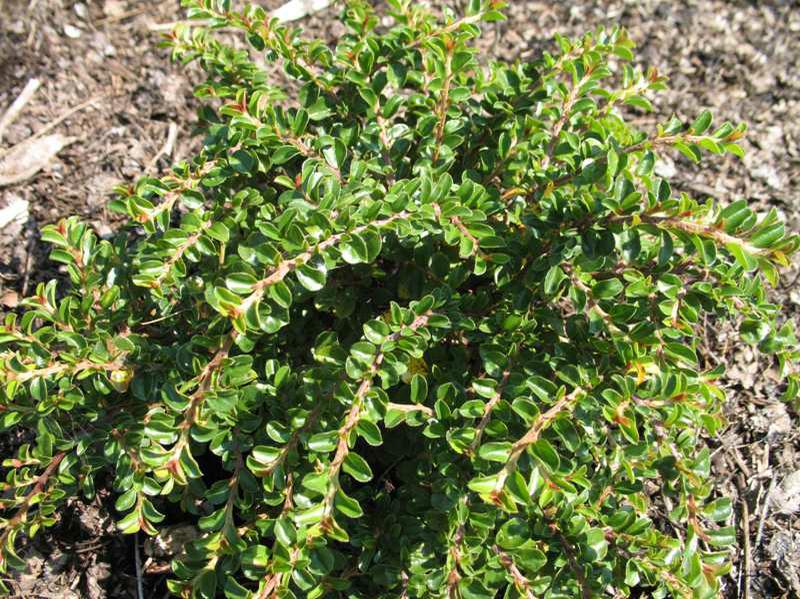Creeping Cotoneaster (Cotoneaster Adpressus ‘Little Gem’)
Creeping Cotoneaster
Cotoneaster adpressus, sometimes commonly called creeping cotoneaster, is a prostrate, slow-growing, deciduous shrub that grows to only 1’ tall but spreads to 6’ wide. Horizontal branches may root where they touch the ground. Ovate to obovate, dark green leaves (to 1/2” long) have wavy margins. Leaves often turn a quality shade of red in fall. Five-petaled, tiny white flowers tinged with pink bloom singly or in pairs in late spring. Bees are attracted to the flowers. Flowers are followed by spherical dark red fruits (1/4” long) that mature in late summer to fall.
Genus name comes from the Latin cotonea meaning “quince” and aster meaning “resembling” or “similar to”.
Specific epithet probably refers to the prostrate plant habit (pressed against the ground).
‘Little Gem’ (considered to be synonymous with ‘Tom Thumb’) is more compact. It forms a dense, low mound to 8-12” tall, spreading over time to 3-6’ wide. It serves as an excellent ground cover. It rarely produces flowers or fruit. Small, ovate to obovate, glossy dark green leaves (to 1/2” long) have wavy margins. Leaves turn a quality shade of red in fall. The origin of ‘Little Gem’ is somewhat unclear. It has been considered to be a cultivar of several different Cotoneaster species including C. adpressus, C. apiculatus and C. horizontalis.

Best grown in moist, loamy, well-drained soils in full sun to part shade. Good drainage is important. This is a tough and adaptable plant that can withstand poor soils. Established plants tolerate drought. Container-grown plants may be spaced 3’ apart for mass plantings. Easiest propagation is by stem cuttings. If correctly sited, plants may require little pruning. Plants dislike hot summer conditions and often struggle south of USDA Zone 7.
| Hardiness zone | 4 - 7 |
| Sun light | Full Sun To Part Shade |
| Water | Medium |
| Maintenance | Low |
Susceptible to fireblight, leaf spots, canker, cotoneaster webworm and lacebug. Mites may appear, particularly in hot and dry conditions. Dense foliage can present maintenance problems because of the difficulty of cleaning dead leaves and trash from the interior of a planting.
Creeping cotoneaster is a valuable landscape plant that offers good foliage, flowers and fruit. Mass as a woody ground cover for sunny areas in the landscape including banks and slopes where it can also provide some erosion control. Sprawl over rocks in rock gardens or along stone walls. Foundations.
| Common name | Creeping Cotoneaster |
| Botanical name | Cotoneaster Adpressus 'Little Gem' |
| Plant type | Deciduous Shrub |
| Family | Rosaceae |
| Hardiness zone | 4 - 7 |
| Water | Medium |
| Maintenance | Low |
| Flower color | White Tinged With Pink |
| Flowering period | May - June |
| Height | 0.75 To 1.50 Feet |
| Width | 3 - 6 Ft. |